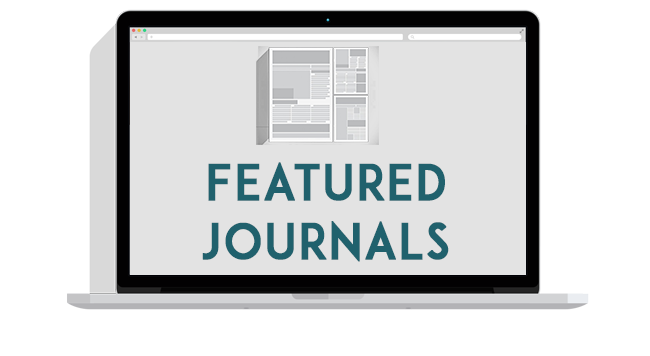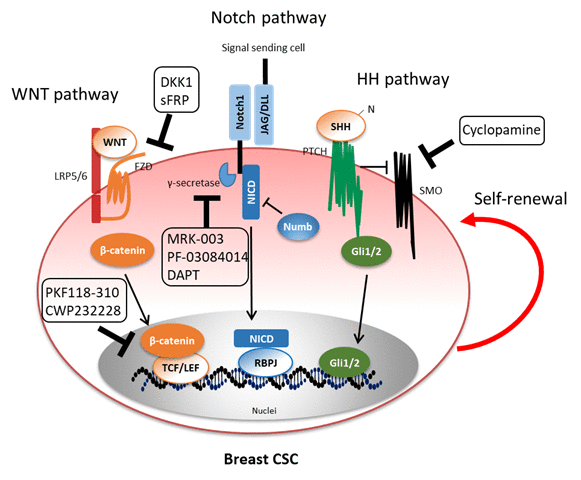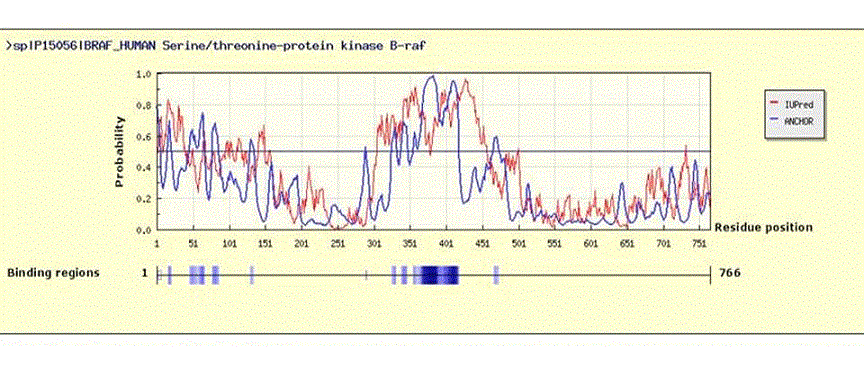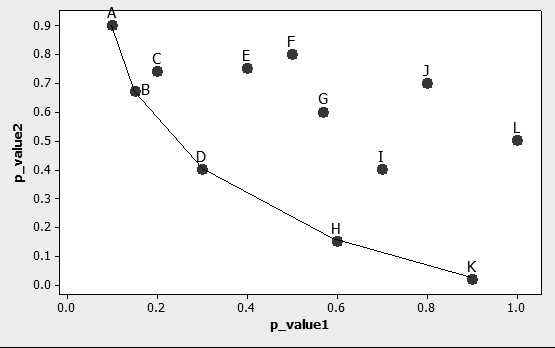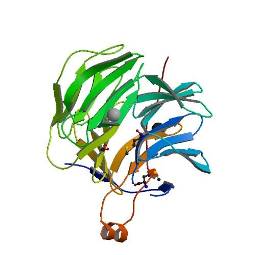Cancer Studies
Cancer Studies aims at providing a platform for the dissemination of information among the broad discipline of oncology, including physiology, prevention, diagnosis, and treatment. The journal seeks to appeal to the audience of oncology and related subjects by publishing original research and review articles concerning clinical trials, epidemiology, molecular and cellular biology, and cancer genetics. Cancer Studies facilitate the wider dissemination of knowledge in order to substantially contribute to early detection, diagnosis, and cure to improve the survival rate and quality of life of patients.
Coverage includes
- Epidemiology
- Prognosis and Treatment
- Clinical and Molecular Therapeutics
- Diagnostic Imaging Techniques
- Evidence-based Medicine
- Staging
- Pharmacoeconomics and outcomes research
- Systemic therapies
- Radiotherapy
- Chemotherapy
- Pathology
- Palliative Care
- Surgical approaches
- Molecular diagnostics
- Adjuvant therapy
- Biomarkers
- Clinical trials
- Comparative effectiveness
- Molecular biology of disease
- Risk and prevention
Editorial Contact
Douglas Krech, Editor in Chief
Journal Information
ISSN: 2576-8263
Current Volume: Volume 2, Issue 1
Open Access: For all article types
Average time to first decision: 27 days (29 days in 2019-2020)
Impact metrics
The following citation metrics are produced by abstracting and indexing databases using their respective datasets.
Google Scholar (h5-index and h5-median scores awaiting)
Benefits of publishing with us
Open Access
All articles published by Cancer Studies are made freely and permanently accessible online immediately upon publication, without subscription charges or registration barriers.
Article Processing Charges
Cancer Studies accomplishes global open access. The journal, therefore, levies an affordable article-processing charge of $1495 for each article accepted for publication.
Peer Review — High standard, rigorous peer review
All articles that reach us undergo a double-blind peer review by at least two anonymous reviewers before being considered for publication in the journal.
Post-publication Open Peer Review
Following publication, the peer review comments would be made open for anyone to read. The authors have the option to make the peer review history publicly available after publication.
Research Promotion
Increased credibility and wider dissemination of published articles.
FEATURED ARTICLES
Editorial Board
Thamil Selvee Ramasamy
Department of Molecular Medicine
Faculty of Medicine, University of Malaya, Malaysia
Rachna T. Shroff
MD Anderson Cancer Center
The University of Texas, USA
David Huang
Medical Physics
Duke Kunshan University, China
Lonzetta L. Newman
Department of Clinical Cancer Prevention
University of Texas MD Anderson Cancer Center, USA
James L. Cox
Kirksville College of Osteopathic Medicine
A.T. Still University, USA
Giorgio Bogani
Medical Director
National Cancer Institute (INT), Italy
James CHIM Chor Sang
Department of Medicine
The University of Hong Kong, Hong Kong
Xianquan Zhan
Xiangya Hospital
Central South University, China
Shi-Yong Sun
Department of Hematology and Medical Oncology
Emory University, USA
Rayudu Gopalakrishna
Department of Cell and Neurobiology
University of Southern California, USA
Vittorio Gebbia
Medical Oncology Unit
University of Palermo, Italy
Adrian Pablo Huñis
Centro Oncológico Buenos Aires
University of Buenos Aires, Argentina
Vladimir Zaichick
Neutron Activation and X-Ray Fluorescent Analysis
Medical Radiological Research Centre, Russia
Fang-yu Chou
College of Health and Social Sciences
San Francisco State University, USA
Noah Isakov
Department of Microbiology, Immunology and Genetics
Ben Gurion University of the Negev, Israel
Juliana Hamzah
Harry Perkins Institute of Medical Research, Australia
Wen-Chin Huang
Graduate Institute of Biomedical Sciences
China Medical University, Taiwan
Domenica Lorusso
Department of Gynaecologic Oncology
Catholic University of the Sacred Heart, Italy
Zsolt Baranyai
1st Department of Surgery
Semmelweis University, Hungary
Mansoor Raza Mirza
Department of Oncology
Copenhagen University Hospital, Denmark
Stefano Scabini
Unit of Surgical Oncology
IRCCS SAN MARTINO-IST, Italy
Wan-Ping Yang
Department of Nursing
Fooyin University, Taiwan
Svilen P. Sabchevski
Institute of Electronics
Bulgarian Academy of Sciences, Bulgaria
Barbara Jarzab
Department of Nuclear Medicine and Endocrine Oncology
Centrum Onkologii – Instytut, Poland
Mohammad Nezami
Cancer Immunologist
Pacific Medical Center of Hope, USA
M. Raafat El-Gewely
UiT Arctic University of Norway, Norway
Guidelines for Submission
Manuscript Preparation
Submission and Components
Submissions to Rivera journals should include the following:
- Cover Letter
- Manuscript
- Figures and Tables
- Supplemental Materials
Authors are encouraged to submit all the components as 'zip file' while submitting on our online system or via email as an attachment.
Cover Letter should:
- briefly summarize or provide an outline of your manuscript, and why it is a worthy contribution to the concerned journal;
- specify the Rivera journal that your manuscript best pertains to;
- indicate, if applicable, that it is submitted as a part of Special Issue;
- specify the manuscript type (original research, review, etc.)
- detail any previous interaction(s) with Rivera Publications (previously submitted)
- specify all authors' information, including affiliation
- include acknowledgments and funding information (if applicable) and any competing interests
Authors
All persons who qualify for authorship should be listed as authors. However, the corresponding author must ensure that each author listed has substantially contributed or participated sufficiently in the work and is responsible for that particular portion of the manuscript. However, people who do not qualify for authorship should be listed in acknowledgments.
One author (corresponding author) should be listed with an asterisk and should provide his or her email address. For the remaining authors, if applicable, following information should be included:
- First name and last name
- Complete affiliation, along with the country
- Email address (optional, but mandatory for the corresponding author)
For example:
Robert Ludwig1
Yale University, New Haven, Connecticut, USA
Acknowledgements
This should include all the people who have contributed toward the work in one way or the other. However, authors are required to ensure that people acknowledged should agree to being so named.
Funding Information
List all the sources of funding, including relevant research grant numbers, as applicable. Also, authors are encouraged to list all the contributing authors associated with specific funding, if applicable.
Conflict of interest
The corresponding author is required to provide a statement of conflict of interest on behalf of all the authors. For further information, please refer to our Conflict of Interest Policy page.
Optional information
While we are not obligated to use these or recommend to the concerned Editor(s), we do encourage authors to provide names and contact information of 2-4 external reviewers and, if applicable, 1-2 opposed reviewers.
Manuscript Layout
The word count for original research is 3500–4000 words and up to 5500 words for studies involving meta-analysis. Authors are encouraged to employ a standard and concise writing style. If you are not a native English speaker, we encourage you to utilize our language editing services-or ask a native English speaking colleague for assistance.
All manuscript submissions can have the following sections:
- Title
- Abstract
- Keywords
- Main Text
- Introduction
- Materials and methods
- Results
- Discussion
- Conclusion(s)
- References
Title
The title should not exceed 200 characters and set in title case. The title should be concise, specific, and easily comprehensible to readers.
Abstract
The abstract should not exceed 300 words and should be unstructured (without sub-heading such as objective, methodology, results, discussion, etc.). It should provide a clear description of the objective(s) of the study, demonstrate the methodology used, and summarize the study's prime conclusion(s). At the end, a statement regarding the study's significance to a potentially wider audience should be included.
Keywords
Authors can provide 4-6 keywords. The first letter of each keyword should be upper case, and keywords should be separated by a semicolon (;).
References
Published work along with any citable items should be cited in the reference list. While we follow very stringent reference formats, authors need not to spend time formatting their reference. They can submit the manuscripts formatted in any reference style (style will be formatted once the manuscript is accepted for publication), but it is preferable that they adhere to the journal format.
For Health and Medicine
Rivera uses AMA style. Items are listed numerically in the order they are cited in the text.
Example journal article (2-6 authors): Salwachter AR, Freischlag JA, Sawyer RG, Sanfey HA. The training needs and priorities of male and female surgeons and their trainees. J Am Coll Surg. 2005; 201: 199-205.
Example journal article (more than 6 authors): Fukushima H, Cureoglu S, Schachern P, et al. Cochlear changes in patients with type 1 diabetes mellitus. Otolaryngol Head Neck Surg. 2005; 133: 100-6.
Example book: Modlin J, Jenkins P. Decision Analysis in Planning for a Polio Outbreak in the United States. San Francisco, CA: Pediatric Academic Societies; 2004.
Example book chapter: Solensky R. Drug allergy: desensitization and treatment of reactions to antibiotics and aspirin. In: Lockey P, ed. Allergens and Allergen Immunotherapy. 3rd ed. New York, NY: Marcel Dekker; 2004:585-606.
Example online article: Wolf W. State's mail-order drug plan launched. Minneapolis Star Tribune. May 14, 2004:1B.
Example article from any database: Calhoun D, Trimarco T, Meek R, Locasto D. Distinguishing diabetes: Differentiate between type 1 & type 2 DM. JEMS [serial online]. November 2011; 36(11):32-48. Available from: CINAHL Plus with Full Text, Ipswich, MA. Accessed February 2, 2012.
In-text citation: For referencing an article, a number is used. This is different from in-text citations in AMA—author's last name is not used. The order of numbering will be contingent on the order in which you use that reference within your paper. For example, the first article referenced will be given number one in superscript (1) followed by second and third articles as 2,3. In references section, the articles should appear numerically in the order they are cited within the text.
Figures and Tables
Figures and tables should be included in the main text (manuscript) to aid in the review process. However, for larger files (size exceeding 10 Mb) must always be submitted separately (should be properly mentioned in the main text, wherever applicable).
Figure captions and legends
Figure files should be included in the main document, and not as supplemental materials. Figure caption should be preceded by the figure, while figure legends should immediately follow the figure. Figure captions should be concise (not to exceed 18 words) and set in bold type. All figures should be numbered in sequence, using Arabic numerals, for example, Figure 1, Figure 2, etc.
Table captions and legends
Tables should be cited in ascending numeric order. Each table should be preceded by a table caption (brief and specific; not to exceed 18 words), and immediately followed by table legends, if applicable, used to explain abbreviations and other supporting information about the data. Larger tables, however, can be submitted as supplemental materials.
Review Comments and Revision
Submission Instructions
While submitting a revised manuscript, the authors should include the following:
Revised manuscript (clean copy): Prepare a clean copy of your revised manuscript that does not show track changes. Rename this file as "Main Document".
Revised manuscript (marked-up copy): Include a copy of your manuscript file showing the changes you have made (track changes). Rename this file as "Manuscript with Track Changes".
Response to reviewers: Address the specific points made by each Reviewer and/or Editor. Include your responses to all the reviewers' and editor's comments and list the changes you have made to the manuscript. Rename this file as "Response to Reviewers".
Supplementary Information
Information integral to the comprehensive understanding of the manuscript, but is either too large to be included in the main document or due to any other reason, should be submitted as support materials, such as 3-D visualizations, interactive graphics, large tables and/or figures, and so on. However, authors should note that normal figures and tables should not be included under supplemental materials.
Ethical Guidelines
For manuscripts reporting medical studies that involve human or animal subjects, ethics committee that approved the study must be identified in the manuscript. For studies involving human subjects, all work must conform to the recognized standards as per the "Declaration of Helsinki". In case of any experiments involving animals, authors must provide a declaration that all measures were taken to avoid animal suffering at each stage and also must furnish a detailed description of the procedures used.
Patient Consent
In manuscripts reporting patient cases, patient anonymity must be preserved. Case reports submitted to Rivera Publications should conform to the International Committee of Medical Journal Editors' (ICMJE) recommendations. Patient privacy should be taken care of, and personally identifiable information should not be revealed without informed consent. If informed consent has been obtained, the details must be mentioned in the manuscript.
For live patients, signed consent is mandatory if the authors wish to reveal the patient's identity. In case of deceased patients, consent must be taken from patient's next of kin. If patient's consent was not obtained, patient's details should be anonymized as much as possible. Patient's photographs need to be cropped sufficiently to prevent revelation of identity.
Authors are not required to submit the copy of the patient's consent while submitting their manuscript for consideration in Rivera Publications. However, they should confirm in the Cover Letter that the patient's consent has been obtained. In certain instances, the Editorial Office might request the authors to provide a copy of the same.
Articles in Press
No Published Articles/ No article in press
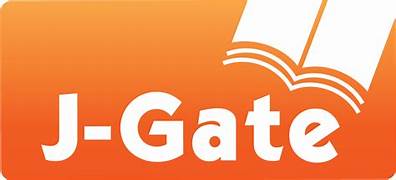
J-Gate
J-Gate is bibliographic database to access global e-journal literature – indexing over 71 million journal articles, updated daily.
© 2025. Rivera Publications, Inc. All rights reserved.


